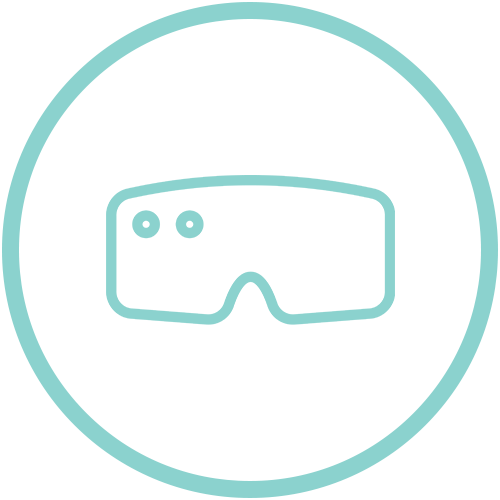
ISEP Course 2: Needs Assessment - November 2024
-
Register
- Non-member - $1,500
- Individual - $1,200
- Individual Lifetime - $1,200
- Retired - $1,200
- Student - $1,200
- Institutional Contact - $1,500
- Associate Contact - $1,500
- Prospect - $1,500
Already registered?
Log in now.
Welcome to ISEP Course 2: Simulation Design. In this course you will learn about needs assessment, outcomes and objectives, fidelity, and debriefing. Also, you will work with your peers to enhance your Simulation-Based Education Proposal. Get ready to give and receive constructive feedback to help each other grow. You will be using the peer review activities in all of the courses.
You will leave Course 2 with a Simulation Based Education Proposal ready to absorb direction regarding debriefing in Course 3. You will also update your Participant Journal with new insights, questions, and goals.
This course is worth 16 CNE.
Key:
INACSL Simulation Education Program Course 2 Acknowledgement File
Open to download resource.
Open to download resource.
This document includes speaker information, disclosures and learning outcomes for course 2.
ISEP Course 2 Pre-Test
5 Questions | 1 attempt | 0/9 points to pass | Graded as Pass/Fail
5 Questions | 1 attempt | 0/9 points to pass | Graded as Pass/Fail
ISEP Course 2: Needs Assessment
Begin self-paced component package.
Begin self-paced component package.
Course 2 - Module 1
Discussion 1: Needs Assessment
Make 1 discussion post to continue.
Make 1 discussion post to continue.
Explore a clinical problem or knowledge gap you aim to resolve using the simulation you will be developing during these courses. You will do this with your peers by following these steps:
State the clinical problem/assessed gap that you intend to address. Briefly describe a synopsis of your intended simulation.
Determine if the problem is related to a gap in knowledge, skill, or attitude.
Describe your determination. The problem may include aspects of all three areas.
Select a needs assessment tool to explore the problem that you have identified.
Explain why you have chosen this tool. Be sure to address general and targeted needs.
Describe how you would utilize your needs assessment results to develop a simulation-based activity.
Post an outline of the work you did for steps 1- 4 in this discussion to the discussion board.
After posting your outline, provide constructive feedback to two of your peers.
Take the time to highlight what they have thought through and offer suggestions and/or insights in places they need to consider.
Considering all that you have learned this far, as well as the input that you received from your peers, update the needs assessment plan in your simulation proposal document. If there is not a spot to do so, create an addendum page to outline the needs assessment results.
Course 2: Outcomes & Objectives
Begin self-paced component package.
Begin self-paced component package.
Course 2 - Module 2
Discussion 2: Learning Objectives
Make 1 discussion post to continue.
Make 1 discussion post to continue.
This will be a unique, multiphase discussion. It is a step toward using peer review. You will:
Assess the outcomes and objectives that you are considering for your SBP.
Identify some of the refinements you have considered based on what you have learned so far.
Receive and supply suggestions among your peers.
Refine your outcomes and objectives based on the feedback that you have received and add them to your SBP proposal template.
To work through this discussion, follow these steps:
Review your proposed simulation. Provide the following in your initial post:
A brief summary of the problem and scope of your simulation.
List your expected outcomes
List your objectives:
Explain your logic for each
Identify how they are related to your stated problem?
>Use the six points of assessment to assess the Objectives File; (full criteria and worksheet linked in Resources above) for each objective:
Do the verbs reflect an application or higher level of Bloom's taxonomy?
Is the objective specific? Describe what you will be measuring.
How will you determine & achievability?
Is the objective realistic?
What is the time-frame?
What level of detail will you share with your participants? When will you share?
Assess at least two of your peer's postings by:
Acknowledging their changes.
Suggest some other alterations and explain them.
Suggest some further connections to their stated problem and scope.
Use the feedback from these discussions to further refine your learning outcomes and objectives using your chosen template for the Simulation-based Proposal (SBP)
Taking into consideration the recommendations of your peers, as well as your own insights after reviewing their processes, make changes to your objectives:
List your changes
Identify how each new objective is SMART
Provide reasoning behind your changes:
What influenced you to make these changes?
How so?
Include this revision process in your evolving simulation proposal using your chosen simulation template.
Course 2: Fidelity
Begin self-paced component package.
Begin self-paced component package.
Course 2 - Module 3
Discussion 3: Fidelity
Make 1 discussion post to continue.
Make 1 discussion post to continue.
In this discussion you will reflect on how you have utilized physical, psychological, and conceptual fidelity in your current simulation activities; You will work with others to upgrade fidelity in your simulation proposal. Take some time to add to the SBP related to the concepts of fidelity you have learned in this module.
Briefly describe your upgraded simulation. Offer a snapshot of each kind of fidelity.
Physical
Psychological
Conceptual
Physical Fidelity
Reflect on how physical fidelity appears in your simulation as you originally drafted it.
Describe how participants will experience it?
What are its strengths?
What are its weaknesses?
Address its weaknesses:
How can you amplify the strengths?
What can you add to the experience to elevate physical fidelity?
Psychological Fidelity
Focus on psychological fidelity in your simulation as you originally drafted it.
Describe how participants will experience it?
What are its strengths?
What are its weaknesses?
Address its weaknesses:
How can you amplify the strengths?
What can you add to the experience to intensify psychological fidelity?
Conceptual Fidelity
Finally, how had you incorporated conceptual fidelity into your simulation as you originally drafted it.
Describe how participants will experience it?
What are its strengths?
What are its weaknesses?
Address its weaknesses:
How can you amplify the strengths?
What can you add to the experience to match the cognitive challenges in which you are trying to immerse your participants?
Share with Your Peers.
Package up this work plan for feedback from your peers. Post it to the discussion board.
Now, take some time to evaluate the of at least two of your peers. Offer suggestions on how they can strengthen their approach to providing each kind of fidelity as the plan stands. What else can they do for each?
Upgrade Your Simulation Fidelity Plan
Using all that you have learned, feedback from your peers, and your own consideration, update how you will provide the three kinds of fidelity to your simulation participants. Make sure that you document your changes and rationale using the SBP template that you have chosen. Add this to your evolving design.
Course 2: Debriefing
Begin self-paced component package.
Begin self-paced component package.
Course 2 - Module 4
Discussion 4: Debriefing
Make 1 discussion post to continue.
Make 1 discussion post to continue.
In addition to the chosen debriefing method, how you arrange the debriefing space and position the learners can influence how the debriefing unfolds.
Questions for Reflection and Discussion:
Consider how your simulation might become charged with enthusiasm and/or conflict particularly between two participants.
How might you position each person in the debriefing space to facilitate a useful debriefing experience for everyone involved?
Briefly Outline Your Simulation
Review your proposed simulation. Provide the following in your initial post:
Describe a potentially emotionally charged scenario among or within participants.
Anticipate how this might affect your simulation. What could ensue?
Outline a Planned Debriefing
Think about all that you have learned thus far in the program. Given the scenario you have described, outline the following using the SBP template that you have chosen. Add addendums to the template if your template does not have an identified spot for this.
Your debriefing plan:
Debriefing theory/framework to be utilized.
Your rationale for this selection and your plan.
Which kinds of questions you will ask to facilitate? Develop these in keeping with your chosen debriefing theory.
Explore/imagine some of the potential learner responses to your SBP that might have to be reviewed in the debriefing.
Evaluate the Debriefing Plans of Your Peers.
Assess at least two of your peer's postings by:
Acknowledging their proposals
Suggest some other framework choices
Pose some What if situations
These might include some thoughts about how participants may react during the debriefing.
Use the feedback from this discussion to r refine your debriefing section of the SBP.
Taking into consideration the recommendations of your peers, as well as your own insights after reviewing their processes, create your debriefing plan using the SBP template you have chosen:
Identify areas where you have changed your strategies based on peer feedback or other identified rationale.
Fidelity & Debriefing Methodology for Scenario Design
Graded as Complete/Incomplete | Due Date: 05/01/2025 at 12:59 AM (EDT)
Graded as Complete/Incomplete | Due Date: 05/01/2025 at 12:59 AM (EDT)
Standard Journal Instructions: To complete each course, you are required to provide a reflective journal entry. Each entry should contain a minimum of 500 words. The document submitted should be a cumulative document with headings and dates of the course journals you are submitting.
Reflection should consider this process:
• Description (keep this fairly short)
• Interpretation or analysis (this should be the main body of your work)
• Outcome or application (ensure you draw clear application to your future practice).
There are journal prompts for most course journals. These are intended to focus you on the materials that were covered in that module. Please note that some journals will have a Part I and a Part II because of the varied materials that are presented in that course. By the end of the ISEP program, your reflective journal will demonstrate your individual learning and progress as a simulation educator/practitioner.
Course 2 Post-Test
5 Questions | Unlimited attempts | 6/9 points to pass | Graded as Pass/Fail
5 Questions | Unlimited attempts | 6/9 points to pass | Graded as Pass/Fail
This is the Course 2 assessment. All participants must achieve an 80% or better to complete this course and completed the journal assignments to receive the course certificate and advance to the next course.



